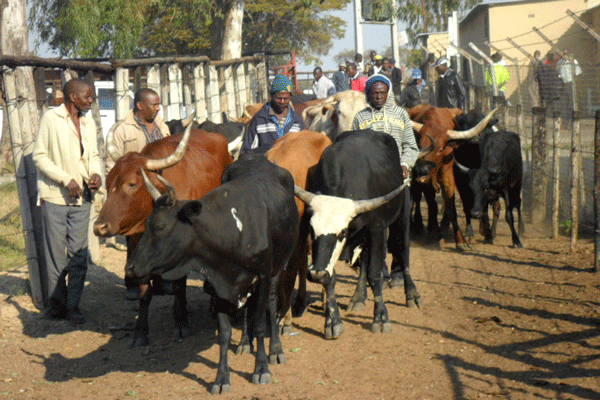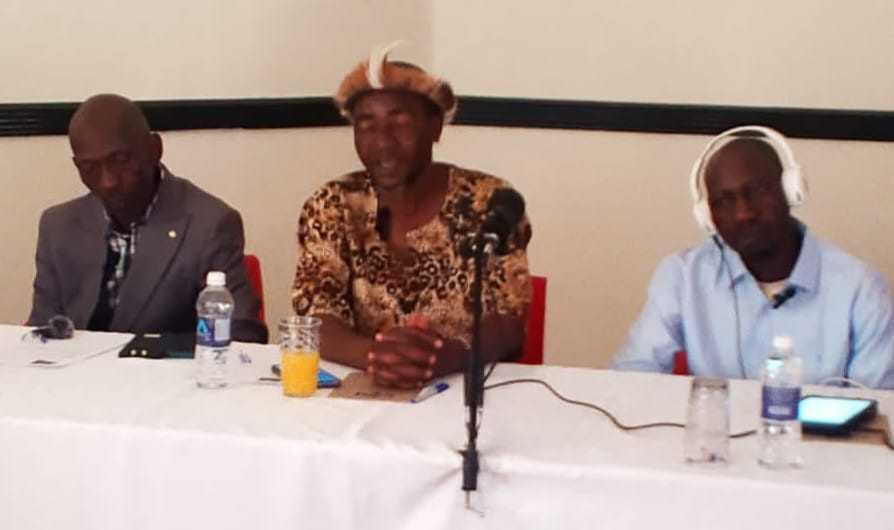
BY MTHANDAZO NYONI
AS the grim effects of climate change continue ravaging the livestock sector in Zimbabwe, experts have proffered various measures to mitigate against the dire situation threatening the national herd.
Zimbabwe has so far lost more than 21 400 cattle to drought, according to official figures, with Matabeleland South recording 15 180 deaths while 6 220 deaths were recorded in Matabeleland North.
Most animals reportedly succumbed to starvation due to depleted grazing fields and diminished water sources.
In this article, Southern Eye will discuss measures, which farmers could implement in the short, medium and long term to save their livestock from total wipeout.
Some of these measures include keeping animals that are adaptive to the local environment like Tuli and Hard Mashona, keeping medium-framed animals, creating stockfeed banks, control of diseases, cross-breeding, among others. Adoption of drought-resilient breeds Matabeleland South crop and livestock officer Simangaliphi Ngwabi says farmers should start rearing more drought and disease-resilient breeds like Hard Mashona, Tuli and the Nguni to combat the effects of climate change.
Ngwabi said these breeds can withstand drought as they require little supplements and water compared to exotic breeds like the Afrikaner, Brahman, Simmental, Hereford, Sussex, Aberdeen Angus, Beefmaster, Limousin, and Charolais, among others. Experts say indigenous breeds can survive on little and even brown grass.
In the absence of grass, experts say the breeds can also survive on leaves.
- Chamisa under fire over US$120K donation
- Mavhunga puts DeMbare into Chibuku quarterfinals
- Pension funds bet on Cabora Bassa oilfields
- Councils defy govt fire tender directive
Keep Reading
Matabeleland North provincial veterinary services officer Polex Moyo said farmers could adopt this as a long-term measure, not short-term, as it takes many years to raise an animal.
Livestock Farmers’ Union chairperson Sifiso Sibanda, however, said exotic breeds were more marketable than indigenous breeds.
“I don’t subscribe to the notion that farmers should keep animals that are adaptive to the local environment as a way of mitigating against drought,” Sibanda said.
“Even Hard Mashona if they don’t have water they die. How can you commercialise Hard Mashona?
“There is nothing commercial with that breed. Our animals have now adapted to the environment, they now feed on mopane leaves. Also, the Tuli breed is hard to get in Zimbabwe,” he said.
Production of medium-framed animals In some of his writings, livestock expert Mhlupheki Dube says cattle producers should consider getting rid of large-framed animals from their herds and produce medium-framed animals.
“I know it has always been the general aim for most livestock farmers to breed animals that are large-framed mainly driven by two factors, that is, the appealing optics and aesthetics of such animals as well as the massive carcasses, which invariably brings more income when the time for marketing comes,” Dube said.
“It is, however, a no-brainer that large-framed animals consume more from your veld than the medium-framed ones and such feed requirements are proving to be a serious burden for farmers because of the constantly deteriorating graze as a result of recurrent droughts.”
Dube said it was imperative for farmers to make their cross-breeding choices carefully searching for animals that will bring meat into the offspring, while trimming down the size of the animal.
He said all other production factors could be maintained but the frame of the animal has to go down.
“We expect our breeders to lead in this breeding reconfiguring exercise to suit the harsh climatic conditions and I can already hear advocates of local genetics claiming vindication,” Dube said.
“With the way the climate is changing and the environment is getting tougher and harsher it is safe to conclude that not far from now the most attractive animal on the show ring will be the one that is of average weight but packs heavy parcels of meat around its frame.
Ngwabi also said large-framed animals like Afrikaner and Brahman were now difficult to keep due to climate change.
Cross-breeding Livestock farmers can also consider cross-breeding, which is the combination qualities of two breeds, and come up with a better product.
For instance, farmers can cross-breed indigenous cattle like Hard Mashona with exotic breeds like Brahman to produce tougher animals that are better able to withstand erratic weather, common in Matabeleland regions.
Keeping manageable herd Sibanda said a number of commercial farmers were keeping animals that exceed the carrying capacity of their farms, leading to overgrazing.
For instance, ideally, Sibanda said on 500 hectares of land, a farmer could keep less than 50 animals but this was not the case with other farmers.
You will find them keeping between 100 and 150 animals on 500ha, he said.
Growing fodder Land, Agriculture, Water, Climate and Rural Resettlement deputy minister Vangelis Haritatos recently said farmers should grow fodder in provinces that have better rainfall.
He described fodder as a great benefit to the animal through nutrients because it is like fresh pastures.
“It is easier to digest, helps with weight gain, increases life expectancy especially with dairy cows, increases yield of milk, and, of course, increases the hoof health of the animal, which generally benefits the health of the animal, which is of critical importance to our ministry. Also remember that fodder is a cost-effective option for our farmers.”
Haritatos also said farmers needed to consider silage, which is also extremely important because it involves preserving the food for the animal, which could then be used during dry times.
“The concept here is that of cross-trade between provinces. For example, Mashonaland West grows feed and exports to dry areas such as Gokwe to feed livestock. Farmers in Gokwe then sell their meat to Mashonaland West province,” he said.
Getting rid of non-productive animals Moyo said with the current situation, chances are high that animals will die again this year.
As such, farmers should start planning on how they can save some of their animals.
“They should consider getting rid of non-productive animals, those that are old. They must sell them and buy stockfeed,” Moyo said, adding that farmers should monitor the situation up to March.
Disease and parasite control Sibanda said diseases and parasites were major constraints to cattle production and were endemic in most Zimbabwe communal areas.
He said diseases such as blackleg, heart-water, babesiosis, anthrax and anaplasmolisis were a threat to farmers compared to drought.
“Animals die due to diseases compared to drought. Animals have never dipped properly since 2018. We are not following the dipping and vaccination calendar. As such, tick-borne diseases are wreaking havoc in Zimbabwe,” he said.
In 2018, more than 50 000 herds were lost to Theileriosis or January Disease, according to the country’s Veterinary Services Department. So far this year, Buhera district has lost over 5 000 cattle to tick-borne disease.
Borehole drilling and dam construction Framers said government should consider drilling boreholes at strategic places in order to solve the water problem caused by the current drought. Government can also create more dams and/or deepen the existing ones.











